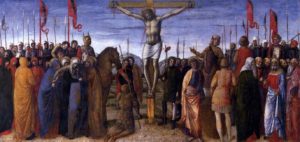 Saints can be daring in their words. For example, St Athanasius said that God became man so that man might become God (De inarnationis c. 54, 3). And St. Thomas Aquinas said that pride is such a serious sin that, as a remedy for it, God permits other sins to humble us (Summa Theologica II IIae, 162,6).
Saints can be daring in their words. For example, St Athanasius said that God became man so that man might become God (De inarnationis c. 54, 3). And St. Thomas Aquinas said that pride is such a serious sin that, as a remedy for it, God permits other sins to humble us (Summa Theologica II IIae, 162,6).
These are daring—even dangerous—assertions if they are not properly understood. And of course they can be properly understood. We do not become gods, but we do share in the divine nature by God’s gift. God may permit our sins, but He does not cause them and we have no right to indulge them on the pretext that it will help to humble us.
But I suspect that saints, having mastered certain topics, state their case quickly so as to move on to other subjects. I suppose they trust the Holy Spirit, working through Scripture and the Magisterium, to supply what their brevity points to but does not develop. Good teachers do not answer every question; they inspire a thirst in their students to further ponder mysteries and seek deeper answers and understanding.
In the Office of Readings this week St. Maximus the Confessor supplies what I would call a daring image. It is daring not so much doctrinally as in terms of piety. He compares the sacred humanity of Christ to bait that has been set out by a fisherman or hunter. Consider his words and marvel at the insight:
Here is the reason why God became a perfect man, changing nothing of human nature, except to take away sin (which was never natural anyway). His flesh was set before that voracious, gaping dragon as bait to provoke him: flesh that would be deadly for the dragon, for it would utterly destroy him by the power of the Godhead hidden within it. For human nature, however, his flesh would restore human nature to its original grace.
Just as the devil had poisoned the tree of knowledge and spoiled our nature by its taste, so too, in presuming to devour the Lord’s flesh he himself is corrupted and is completely destroyed by the power of the Godhead hidden within it.
(From the Five Hundred Chapters by Saint Maximus the Confessor, abbot (Centuria 1, 8-13: PG 90, 1182-1186))
Over the years, I have found that some (though not all) of the faithful are shocked or offended by daring images, humor about divine or sacred things, or the discussion of the flaws of saints and biblical figures. An old Latin phrase speaks of certain things that are offensiva pii aurium (offensive to pious ears). There are surely limits that should not be transgressed, but reasonable people differ on the exact location of those lines.
I call this image provided by St. Maximum daring because bait is a lowly and even gruesome image: a worm or fly on a hook, bloody chum cast on the water to attract fish, or a piece of meat thrown on the ground to attract a predator. This is not my first way of thinking of the sacred humanity of Christ on the cross: the cross as the hook and Jesus as the bait?
How bold and yet how true. Perhaps it should offend our sensibilities. For what is more offensive than the Son of God nailed by us to a piece of wood, bloody and dying outside the city gates of Jerusalem, the Holy City?
St. Maximus takes up this bloody, horrible theme and reminds us that God has always been in control. He was baiting and luring Satan all the while, defeating him through his own lust for blood and death. No sooner did Satan draw near and lay hold of this prey than the Lord defeated him. By dying He destroyed our death and in rising He restored our life.
It is bold, daring, and true.


I know Jesus defeated Satan by His Death, but I don’t know if the Church says exactly how. There are pious ideas – He baited Satan, He bought man from Satan, etc. – but nothing in the Catechisms or Liturgies give an exact how. Instead, the Church gives four reasons for the Incarnation – reconcilation, revelation of love, example of holiness, and deification – and five reasons for the Sacrifice – forgiveness, reparation, example of suffering, share in Christ, and consummation.